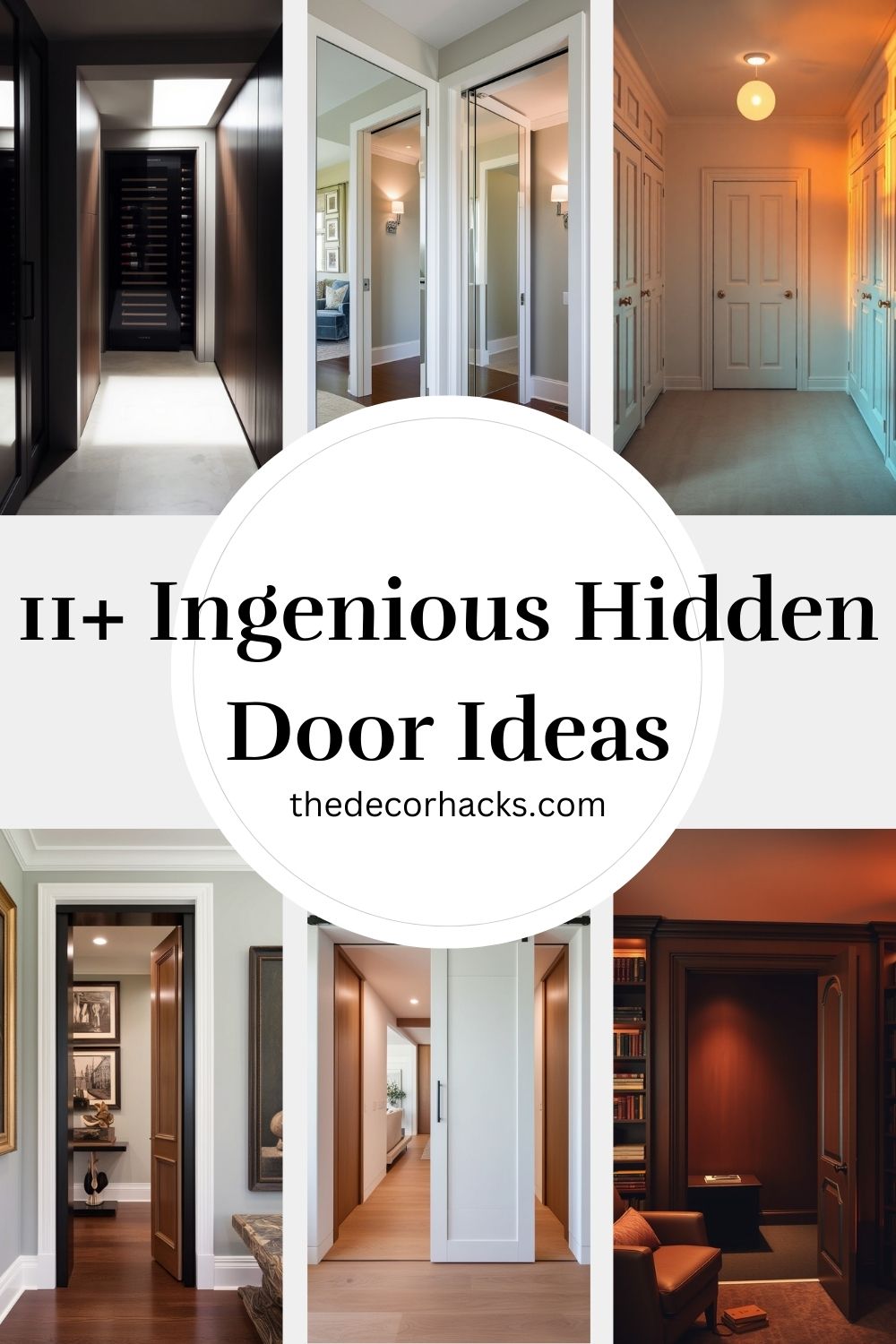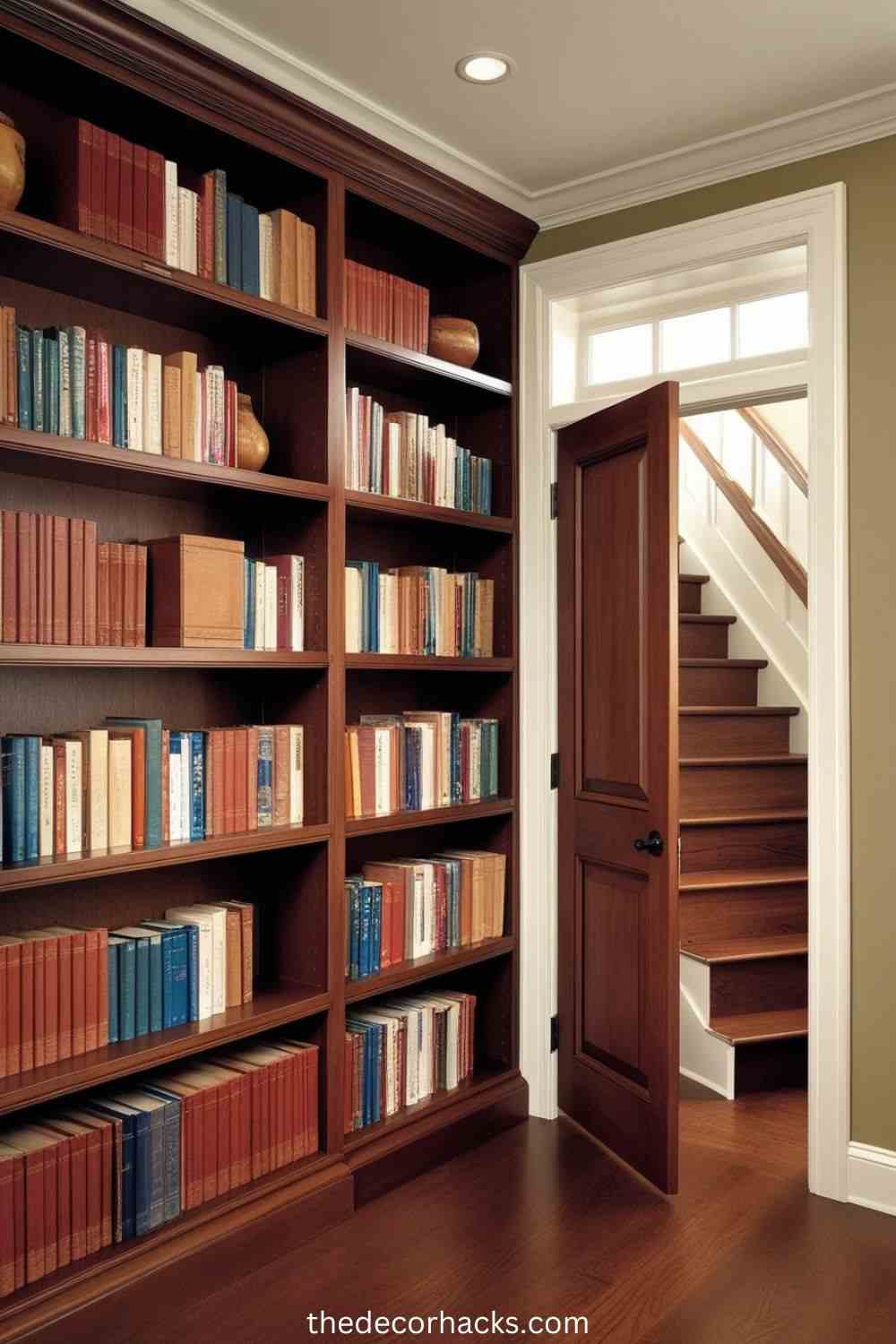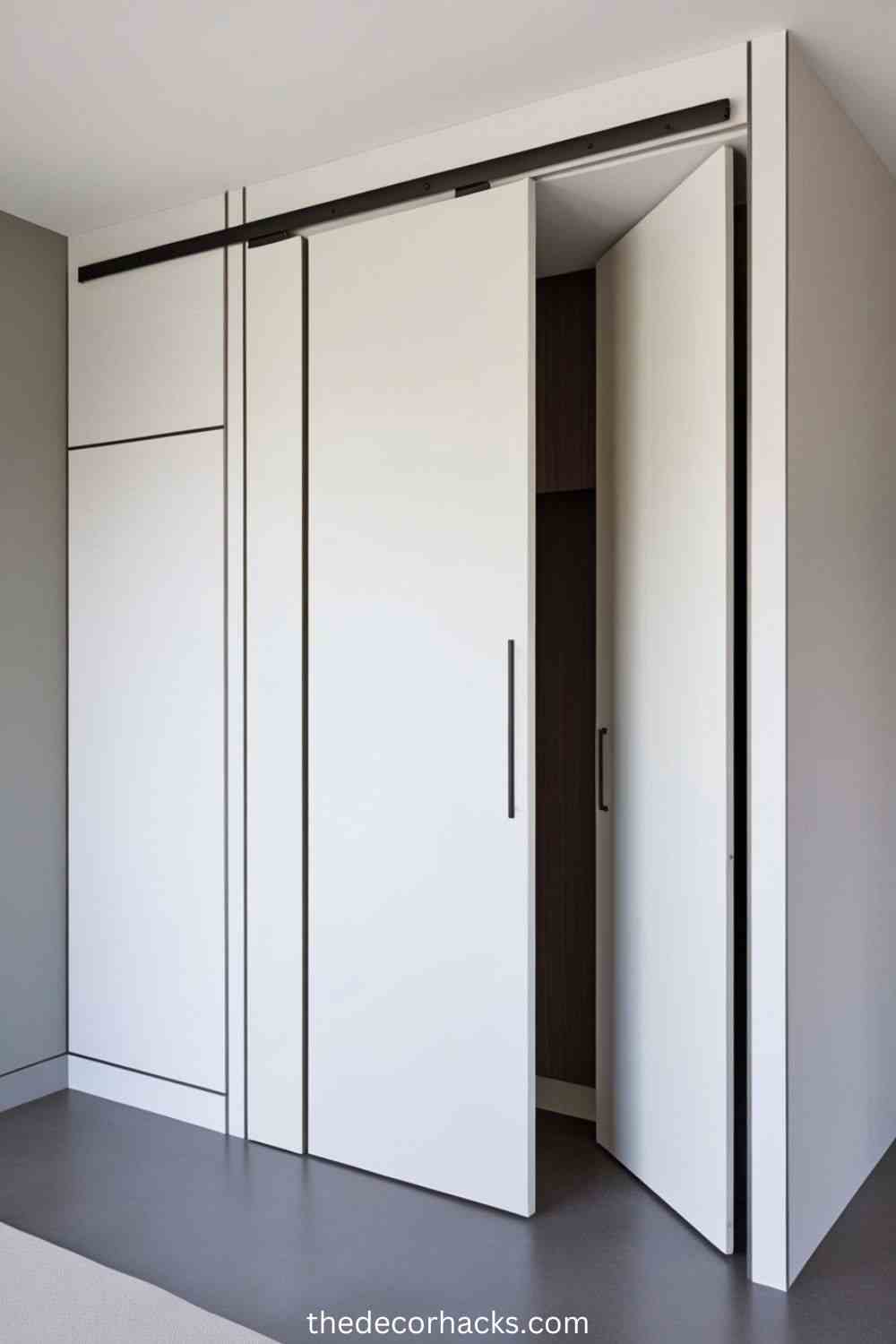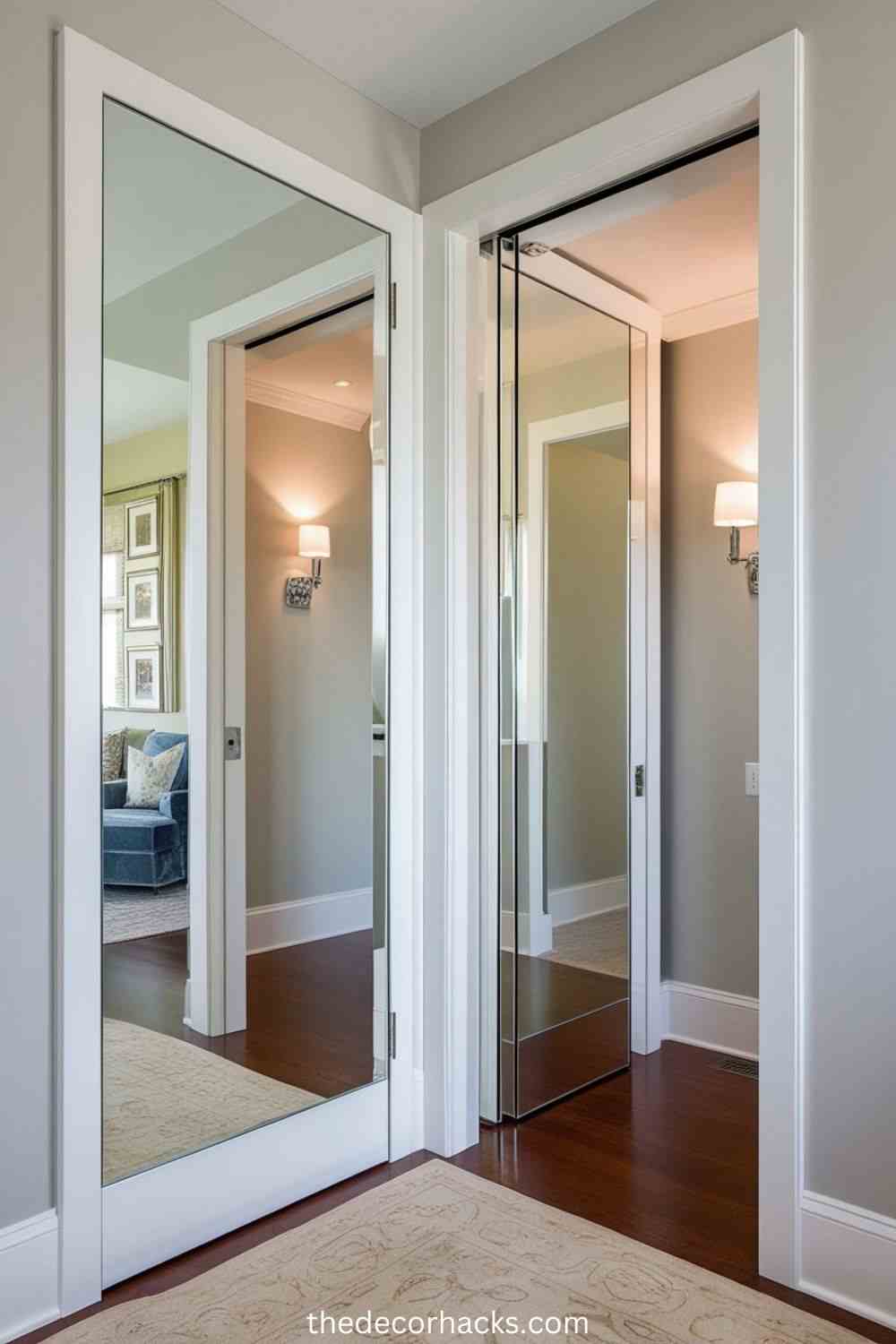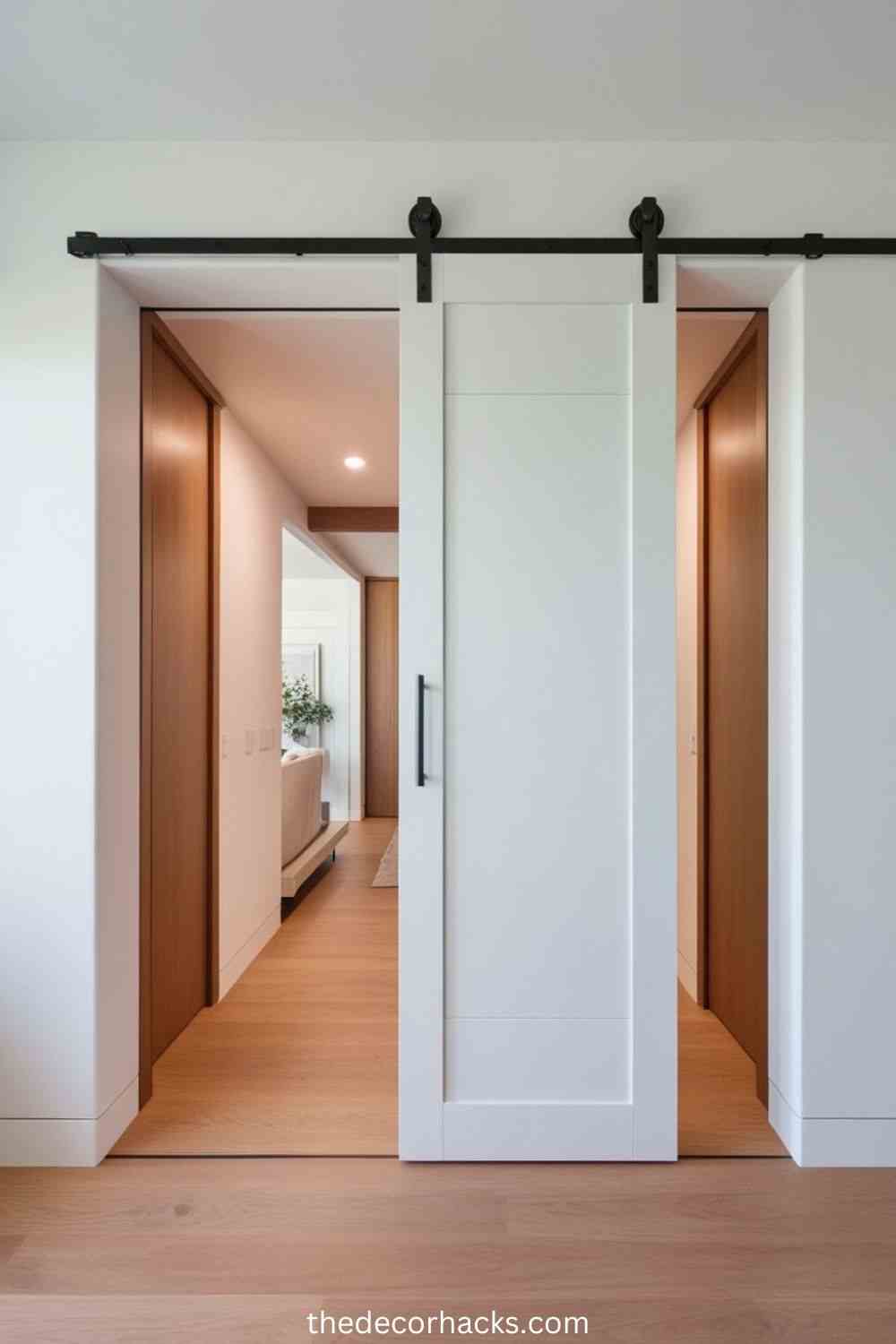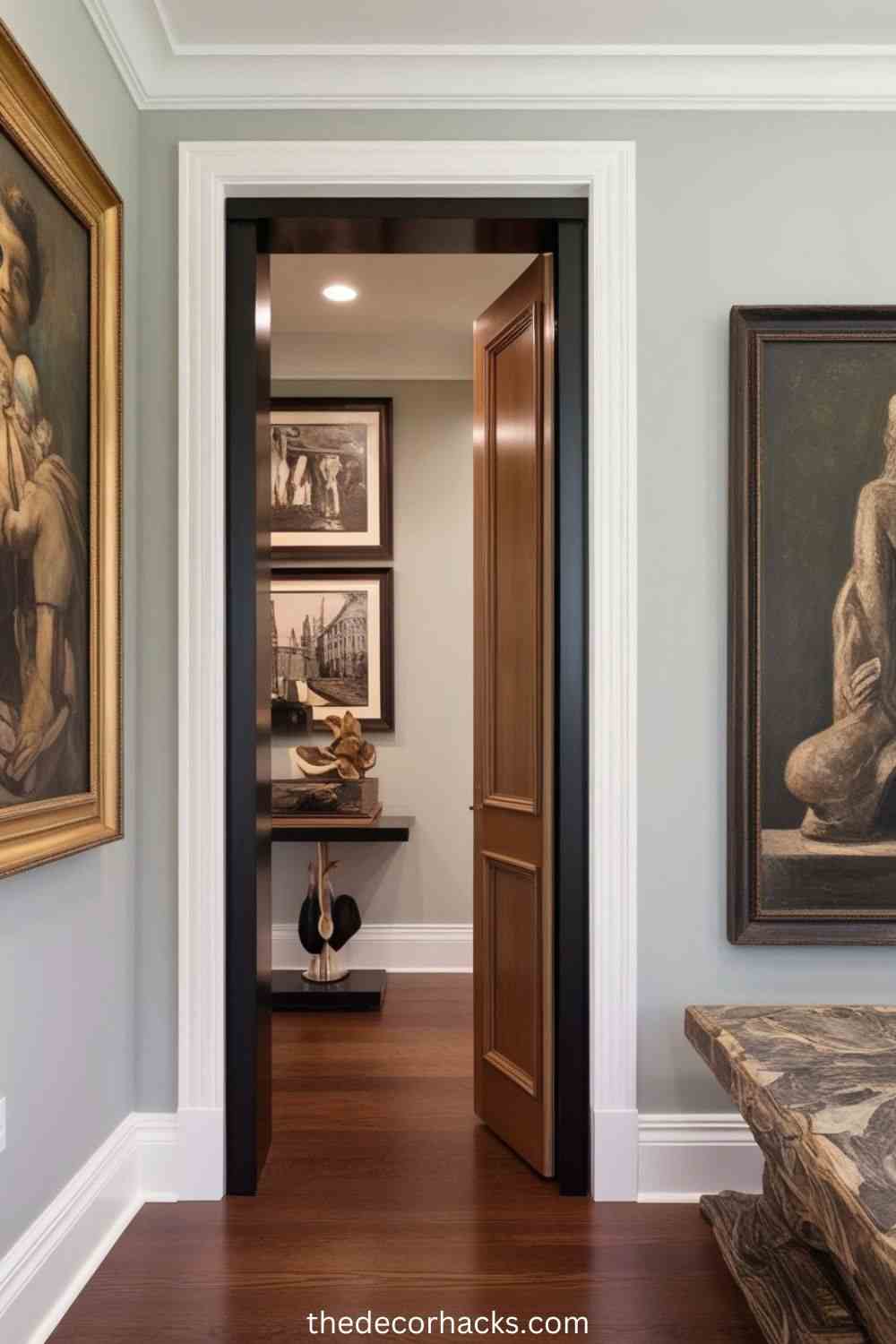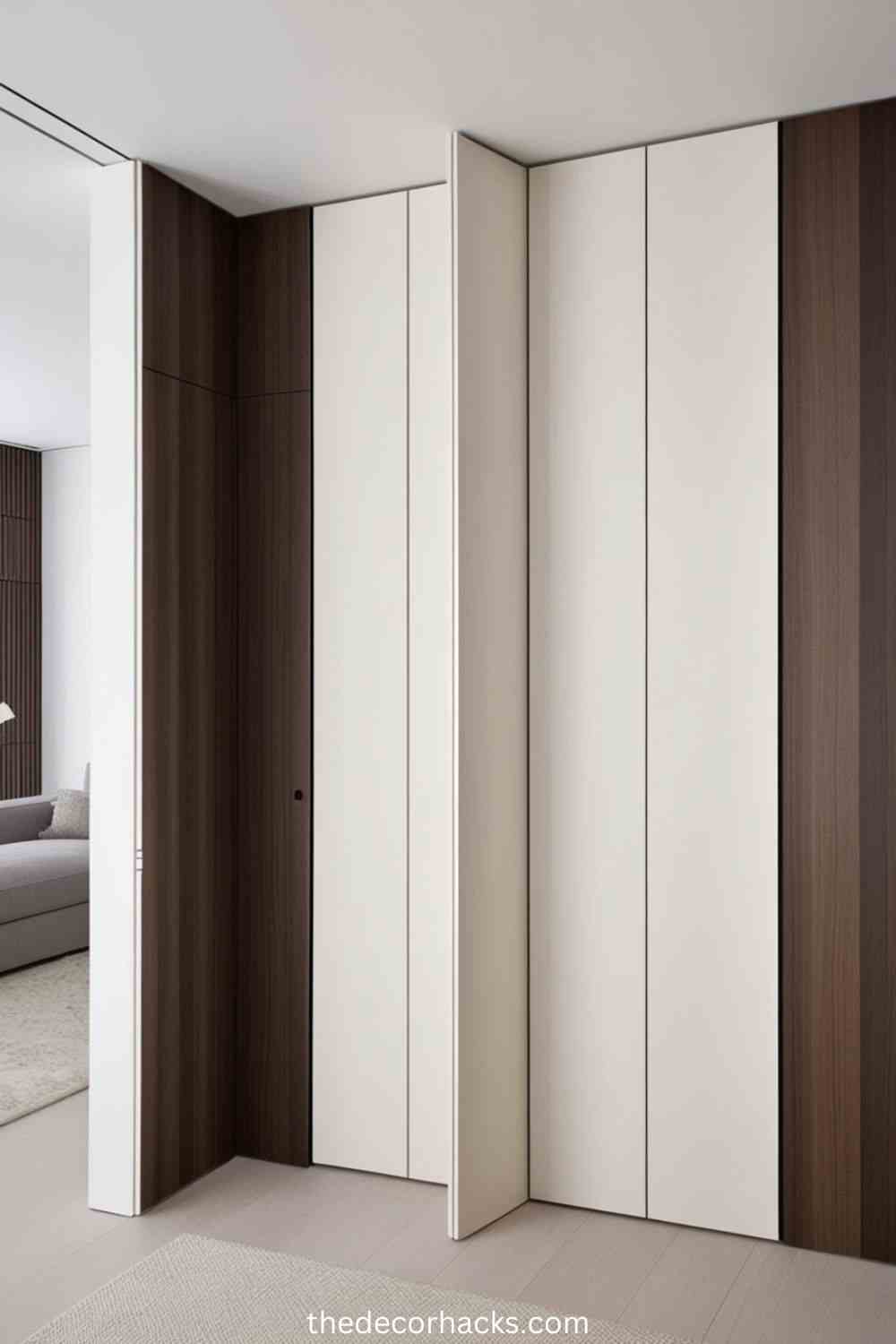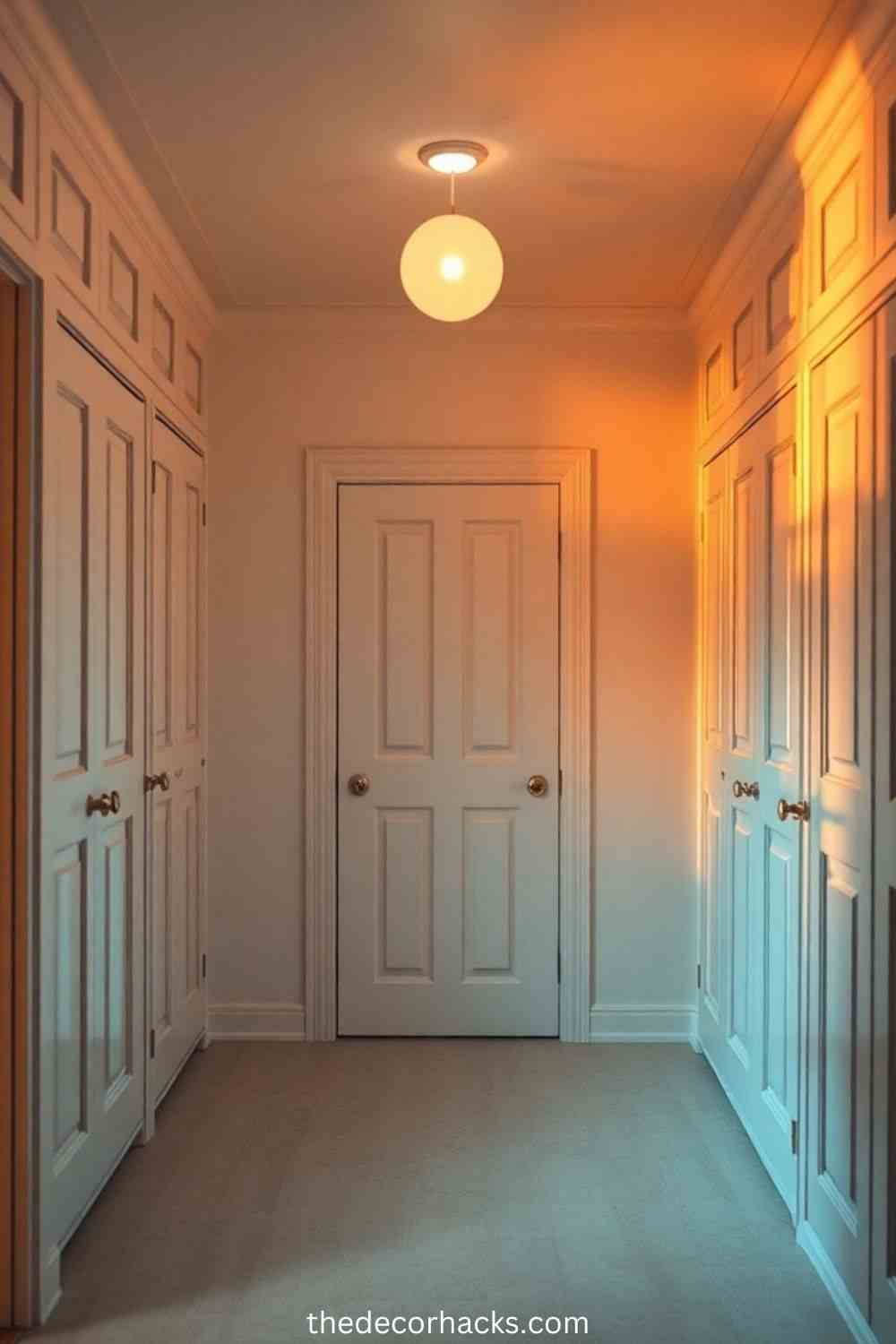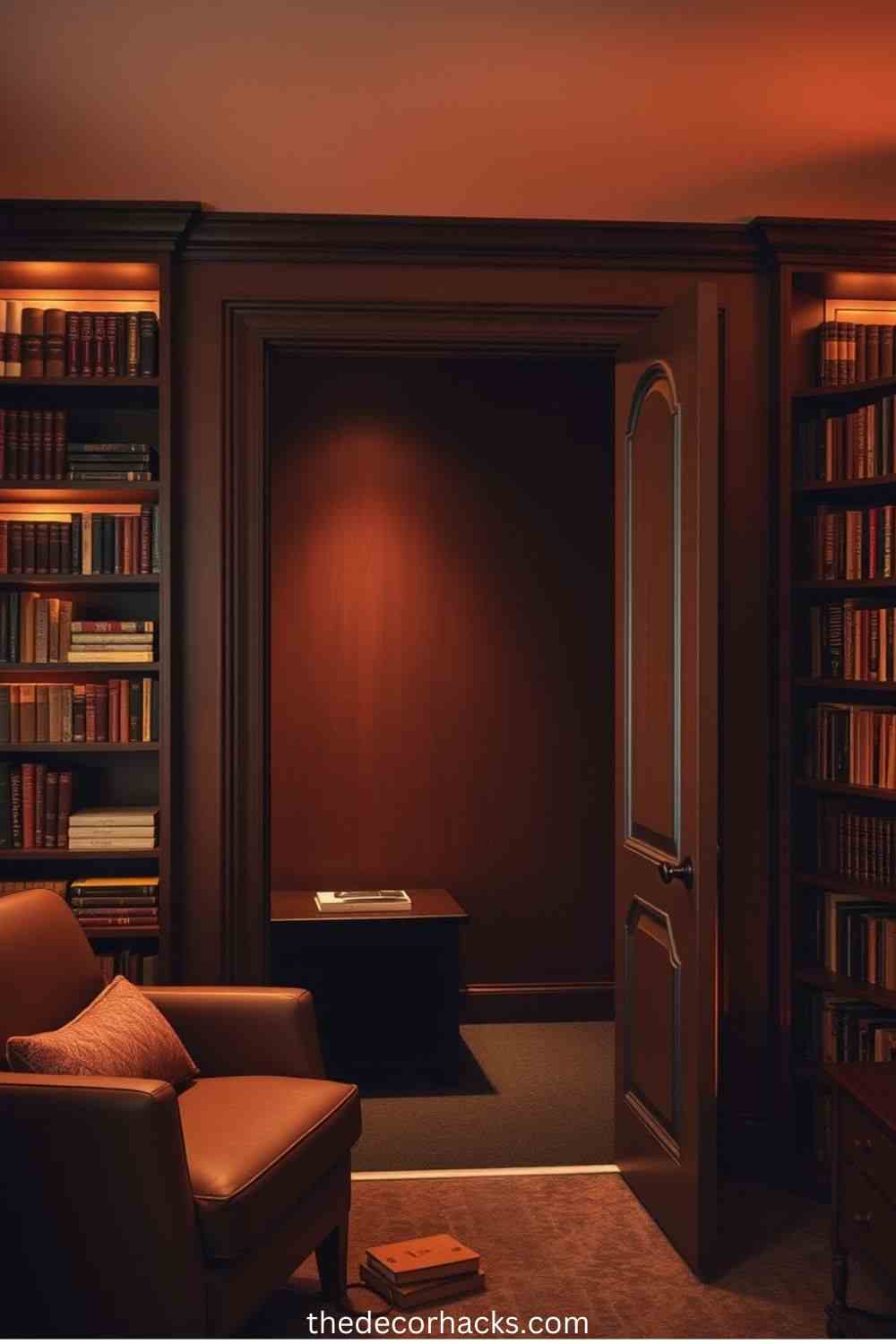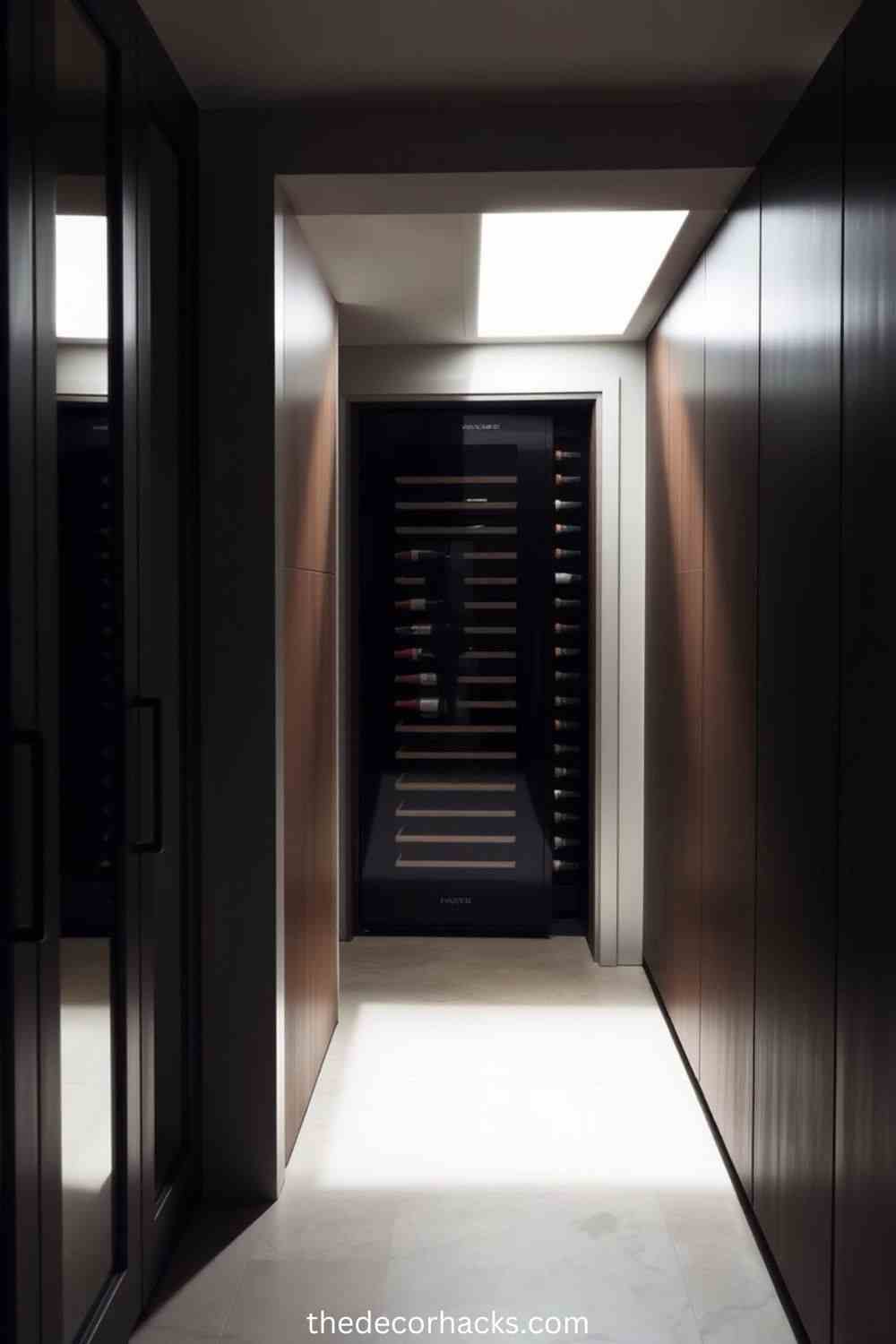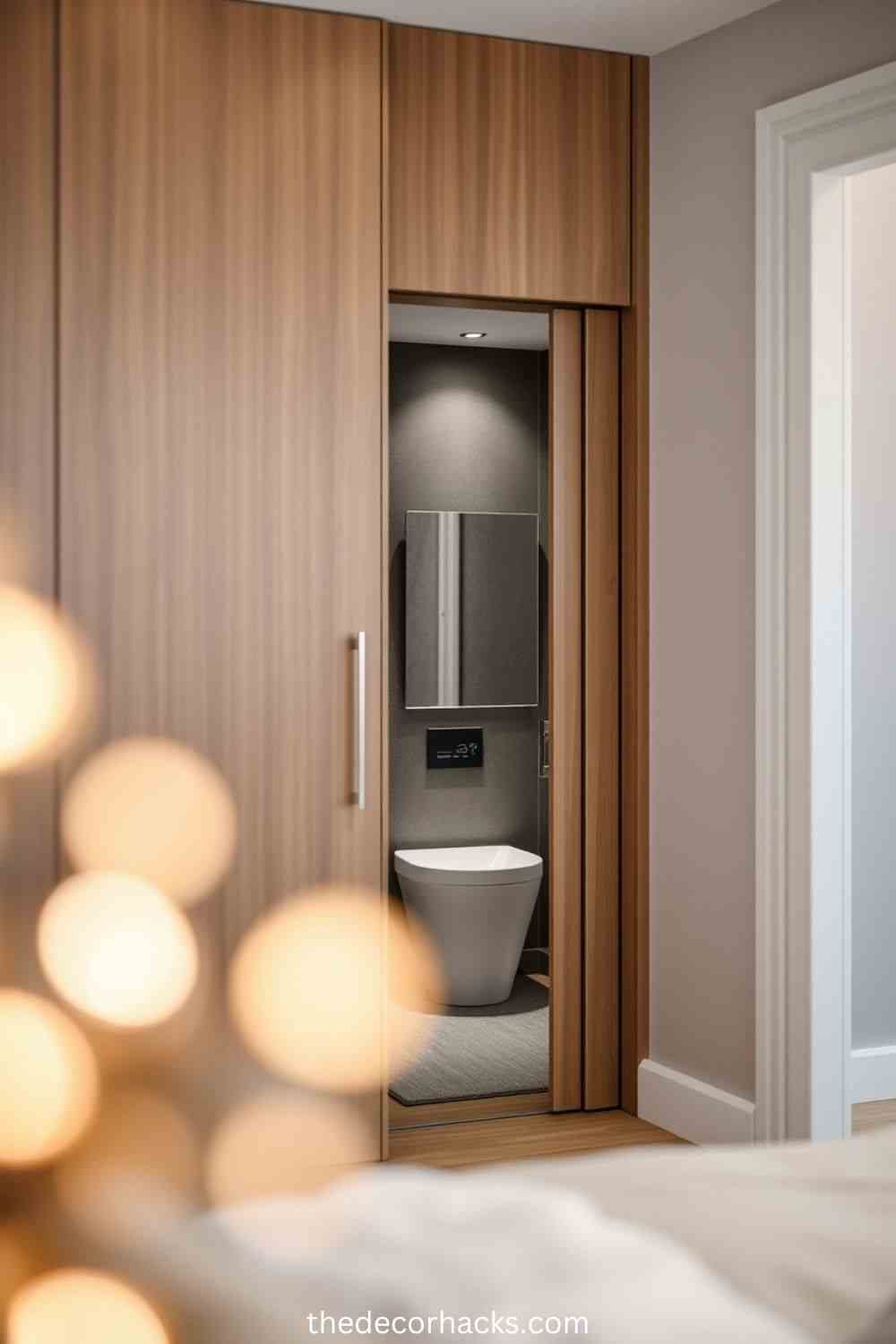Hidden Door Ideas have become an increasingly popular trend in modern home design, offering a clever and functional solution to creating seamless, unobtrusive spaces. These doors, often concealed within walls, bookshelves, or behind artwork, provide a sleek way to maintain the aesthetic flow of a room while serving a practical purpose. Their popularity is rooted in their ability to blend into the background, offering a discreet entry to secret rooms, storage areas, or even private home offices.
Incorporating hidden doors into various spaces can offer several benefits. From an aesthetic standpoint, they allow homeowners to maintain clean lines and open, uncluttered designs. For privacy, hidden doors provide a unique way to create secluded areas without sacrificing style. Additionally, they enhance functionality by serving as multifunctional pieces—combining storage, accessibility, and design in one element. Whether you’re looking to add intrigue to a home, increase the privacy of certain areas, or simply maximize space, hidden doors can play a crucial role in achieving all of these goals.
Ingenious Hidden Door Ideas
Bookcase Doors: A Classic Hidden Entry
Bookcase doors are one of the most iconic and timeless hidden door ideas. Often featured in libraries or home offices, they offer a charming way to conceal an entry to a secret room, closet, or even a hidden staircase. The concept involves turning a regular bookshelf into a functional door that seamlessly blends with the surrounding decor. When designed correctly, a bookcase door can look like an ordinary piece of furniture, providing both aesthetic appeal and practicality.
Pivot Doors for Sleek, Modern Appeal
Pivot doors offer a sleek, contemporary take on the hidden door concept. Unlike traditional hinged doors, pivot doors rotate on a central axis, allowing them to open with a smooth, minimalist motion. This unique mechanism makes them an ideal choice for modern spaces, where clean lines and streamlined design are key. Pivot doors can be incorporated into walls, seamlessly blending with their surroundings, creating the illusion of a continuous surface.
Mirror Doors: Reflective Camouflage
Mirror doors are an ingenious way to conceal a hidden entry while adding a touch of elegance to a room. By using a full-length mirror as a door, you can create the illusion of a reflective surface that seamlessly blends into the room’s decor. When closed, these doors appear as ordinary mirrors, reflecting the surroundings and maintaining the room’s aesthetic flow. However, with a simple push or pull, the mirror transforms into a functional entryway to a hidden space.
Sliding Doors Hidden in Walls
Sliding doors hidden within walls provide a seamless, space-saving solution for incorporating hidden entryways into a room. Unlike traditional swinging doors, which require space to open, sliding doors glide smoothly along tracks, making them perfect for tight spaces or rooms where maintaining a sleek, minimalist look is essential. When hidden within a wall, these doors can be completely camouflaged, blending effortlessly into the surrounding decor.
Hidden Doors Behind Artworks
Hidden doors behind artworks offer a sophisticated and creative way to incorporate secret entries into your home. By using large paintings, framed photographs, or sculptures as camouflage, you can easily conceal a door that leads to a private room or storage area. This idea combines art with functionality, transforming a wall of artwork into a clever mechanism for access while preserving the integrity of your room’s design.
Floor-to-Ceiling Panels for Seamless Integration
Floor-to-ceiling panels are an ideal solution for creating hidden doors that integrate seamlessly with the room’s design. By using large, continuous panels that extend from the floor to the ceiling, these doors blend effortlessly into the wall, making them nearly invisible when closed. This design works particularly well in spaces where you want to maintain an elegant, minimalist look without the distraction of a traditional door.
Hidden Doors for Storage Spaces
Hidden doors for storage spaces are a practical and stylish way to optimize unused areas while maintaining a clutter-free, organized look. By incorporating secret doors into walls, cabinetry, or even furniture, you can create discreet access to storage rooms, pantries, or even under-stair spaces. This design not only hides the clutter but also maximizes space by utilizing often-overlooked areas in the home.
Secret Doorways to Home Theaters
A secret doorway to a home theater offers an exciting and luxurious way to enhance the movie-watching experience while maintaining an element of surprise. Hidden behind a cleverly disguised door, such as a bookshelf, wall panel, or framed artwork, this entryway adds a touch of mystery and sophistication to your home theater setup. The door can be seamlessly integrated into the room’s design, allowing the home theater to remain a private sanctuary without drawing attention when not in use.
Hidden Wine Cellar Doors
Hidden wine cellar doors provide a sophisticated and stylish way to keep your collection discreet while adding an element of intrigue to your home. Whether concealed behind a wall panel, cabinetry, or even a large piece of art, these doors allow you to access a hidden wine cellar without disrupting the design of your living space. This concept is particularly popular in homes where the wine collection is a focal point but where homeowners prefer to keep it out of sight when not in use.
Hidden Bathroom Doors
Hidden bathroom doors are a clever solution for creating discreet access to private spaces while maintaining the flow and aesthetics of a room. Whether incorporated into a master bedroom, hallway, or living area, these doors blend seamlessly into the surrounding design, offering a more subtle and stylish entry to a bathroom. The door can be hidden behind cabinetry, a built-in bookshelf, or a large piece of art, ensuring that the bathroom remains private yet easily accessible when needed.
FAQ
1. What are hidden doors?
Hidden doors are cleverly designed doors that blend seamlessly with the surrounding walls, furniture, or decor, making them nearly invisible when closed. They can be used to conceal secret rooms, storage spaces, or private areas in the home.
2. What are the benefits of hidden doors?
Hidden doors provide several benefits, including enhanced privacy, increased aesthetic appeal, and space optimization. They can help maintain a clean, minimalist look while serving practical functions like concealing storage spaces or creating private rooms.
3. What types of hidden doors are available?
There are various types of hidden doors, including bookcase doors, pivot doors, mirror doors, sliding doors hidden in walls, and doors concealed behind artwork or floor-to-ceiling panels. Each offers a unique style and functionality suited to different spaces.
4. How do bookcase hidden doors work?
Bookcase hidden doors function as regular bookshelves but open to reveal a concealed space behind them. The mechanism can be either hinged or sliding, and the bookcase can be designed to blend in with the rest of the room’s decor, providing a stylish way to access hidden rooms or storage areas.
5. Can hidden doors be used in modern homes?
Yes, hidden doors are highly versatile and can be incorporated into modern home designs. For example, pivot doors or sliding walls offer sleek, minimalist designs that fit perfectly in contemporary interiors.
6. How do mirror doors work as hidden entries?
Mirror doors serve as both functional and decorative elements. They look like standard mirrors when closed, but with a push or pull, they open to reveal a hidden room or space behind them. These doors provide a discreet entry while adding elegance to the room.
7. Are hidden doors difficult to install?
Installation of hidden doors can be more complex than traditional doors, as it involves custom designs and mechanisms. It’s best to work with professionals who specialize in hidden door installations to ensure the design and functionality meet your needs.
8. What spaces are best suited for hidden doors?
Hidden doors are ideal for areas where privacy or aesthetics are important, such as home offices, wine cellars, home theaters, bathrooms, or secret storage spaces. They can also be used in libraries or living rooms to create a seamless flow without visible entryways.
9. Can hidden doors be used for storage?
Yes, hidden doors are an excellent choice for concealing storage spaces. They can be used to hide pantries, closets, or even under-stair storage, maintaining a clean and organized appearance in your home.
10. Are hidden doors secure?
Hidden doors can be very secure when properly designed. Many hidden door mechanisms include locks, touch-activated features, or sensors, which can provide an extra layer of security for sensitive or private spaces.

Hi! I’m Meg Yoder, a Pennsylvania-based designer with a passion for brand development and home decor design. Creativity has always been my driving force, whether I’m crafting a cohesive brand identity or reimagining a living space with unique decor hacks.
I created TheDecorHacks.com as a space to share my favorite design ideas, tips, and inspirations. From DIY projects to expert insights, my goal is to help you transform your spaces into something extraordinary—without breaking the bank.
When I’m not busy designing, you can find me exploring vintage markets, experimenting with color palettes, or sipping coffee while sketching my next big idea. Let’s create something beautiful together!
![The Decor Hacks [Trending Decor Design Ideas]](https://thedecorhacks.com/wordpress/wp-content/uploads/2025/01/cropped-the-decor-hacks.png)
